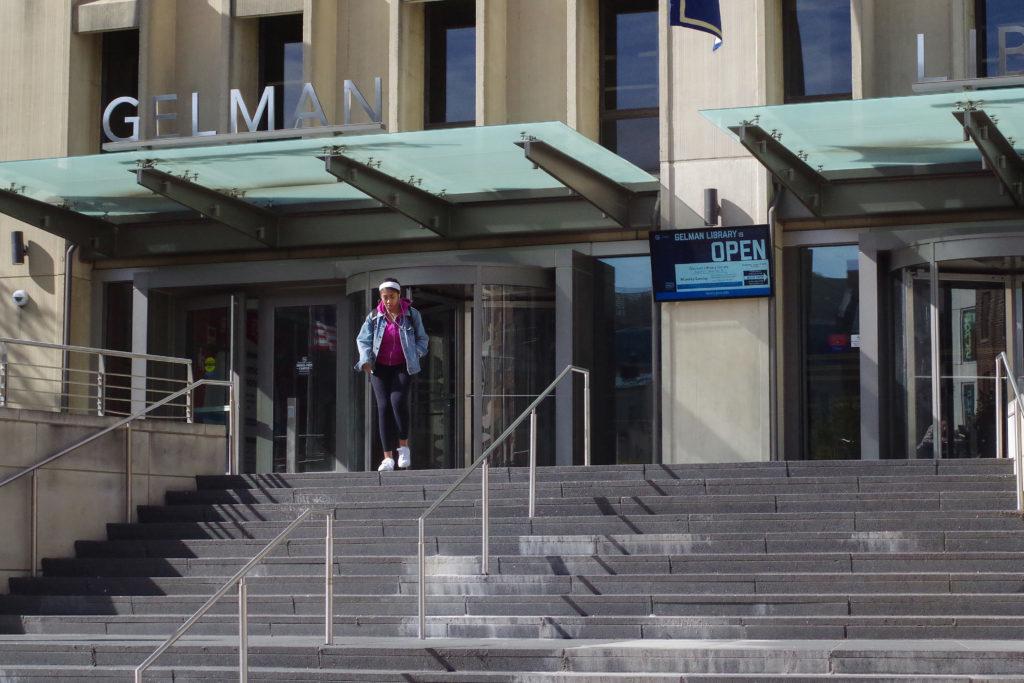The University has invested more than $20 million to reduce carbon emissions on campus.
Officials said within the first six years of GW’s Eco-Building Program – an initiative to update equipment in some buildings to reduce energy and water use – the University has funneled millions to upgrade 48 on-campus buildings, accounting for more than half of GW’s square footage. Officials said the renovations to HVAC and lighting systems could help push GW toward cutting carbon emissions by 40 percent by 2025.
University spokesman Tim Pierce said the University has updated old heating and cooling systems, like boiler controls and chillers, and added new equipment, like variable-speed drives and variable air-volume boxes, which make HVAC systems more efficient. He said the upgrades also included more energy-efficient lighting and controls.
He added that the University has made progress on its 2007 commitment to ensure all new buildings meet the LEED Silver standard or better. Officials have added and renovated 11 LEED-certified buildings, including the Science and Engineering Hall, which opened in January 2015. The buildings comply with specific sustainability requirements, like water use and waste management for construction, building design and energy usage.
“Reducing the carbon footprint of older buildings on campus comes with its own challenges,” Pierce said in an email. “GW created the Eco-Building Program to meet those challenges head-on.”
Pierce said all renovation projects to improve building sustainability are completed with the University’s goal of reducing carbon emissions by 40 percent by 2025 “in mind.”
The University poured $5.3 million into sustainable building upgrades in 2012 as a part of the first phase of a series of replacements of out-of-date systems and fixtures across campus, with a focus on Gelman Library and Lisner Auditorium. Officials said the investment would result in savings that totaled roughly $800,000 a year.
Officials said at the time that renovations to Gelman and Lisner would include the addition of motion sensor lights and low-flow toilets.
Pierce said the renovations to Gelman and Lisner – in addition to an increase in renewable energy consumption through GW’s solar panels and 11 LEED-certified buildings – helped the University reduce its carbon emissions by 22 percent over about a decade.
“The Office of Sustainability will continue to work with the Division of Operations to conduct the building renovations to help us reduce our carbon emissions,” he said. “The office plans to publish a sustainability progress report, which will be a key tool for communicating GW’s progress towards carbon neutrality.”
He added that the report will be published by the end of this academic year.
Sustainability experts said retrofitting buildings can significantly reduce energy used for heating and cooling, though these systems have to be updated frequently to ensure that sustainable equipment is the most efficient and up-to-date it can be.
Margot McDonald, a professor and the head of the Architecture Department at California Polytechnic State University, said that when renovating existing buildings to be more eco-friendly, it can be especially challenging to update features that are “fixed,” like the building’s placement – something that can affect sun exposure and the overall temperature of the location.
McDonald said officials can focus on updating the building’s exterior and easily replace windows and add shading devices to reduce the amount of heat gain for the building. She added that frequent audits of a building’s features can help officials prioritize and plan for frequent updates.
“There’s huge energy saving to be had by just going in and doing what’s called building commissioning and evaluating all of the existing systems,” she said.
Alexis Reyes, the assistant director of sustainability at Pomona College in California, said adding motion-sensored lights – a step GW has taken for both Gelman and Lisner – is a simple and cost-effective way to mitigate high energy consumption in buildings because the lights will eventually turn off and save power.
“If you go into a room and you’re the only person there and then you leave and maybe that room is not occupied very often, it could go hours or maybe even days before someone turns off the light and that’s using so much electricity when you definitely aren’t even benefiting from it,” Reyes said.
Aleksandra Jaeschke, an assistant professor of architecture and sustainable design at the University of Texas at Austin, said officials should also take transportation and the production of building materials into consideration when they renovate an older building because these aspects also contribute to an institution’s carbon footprint.
Jaeschke said that whether a structure is rebuilt or remodeled to reduce carbon emissions, officials should create a plan to track the energy use to ensure that progress in reducing carbon emissions is consistent.
“While it is not always possible to continue using existing buildings, it is always worth trying to extend their life either through adaptive reuse or restoration,” Jaeschke said.
Hannah Lewis and Falyn O’Brien contributed reporting.





